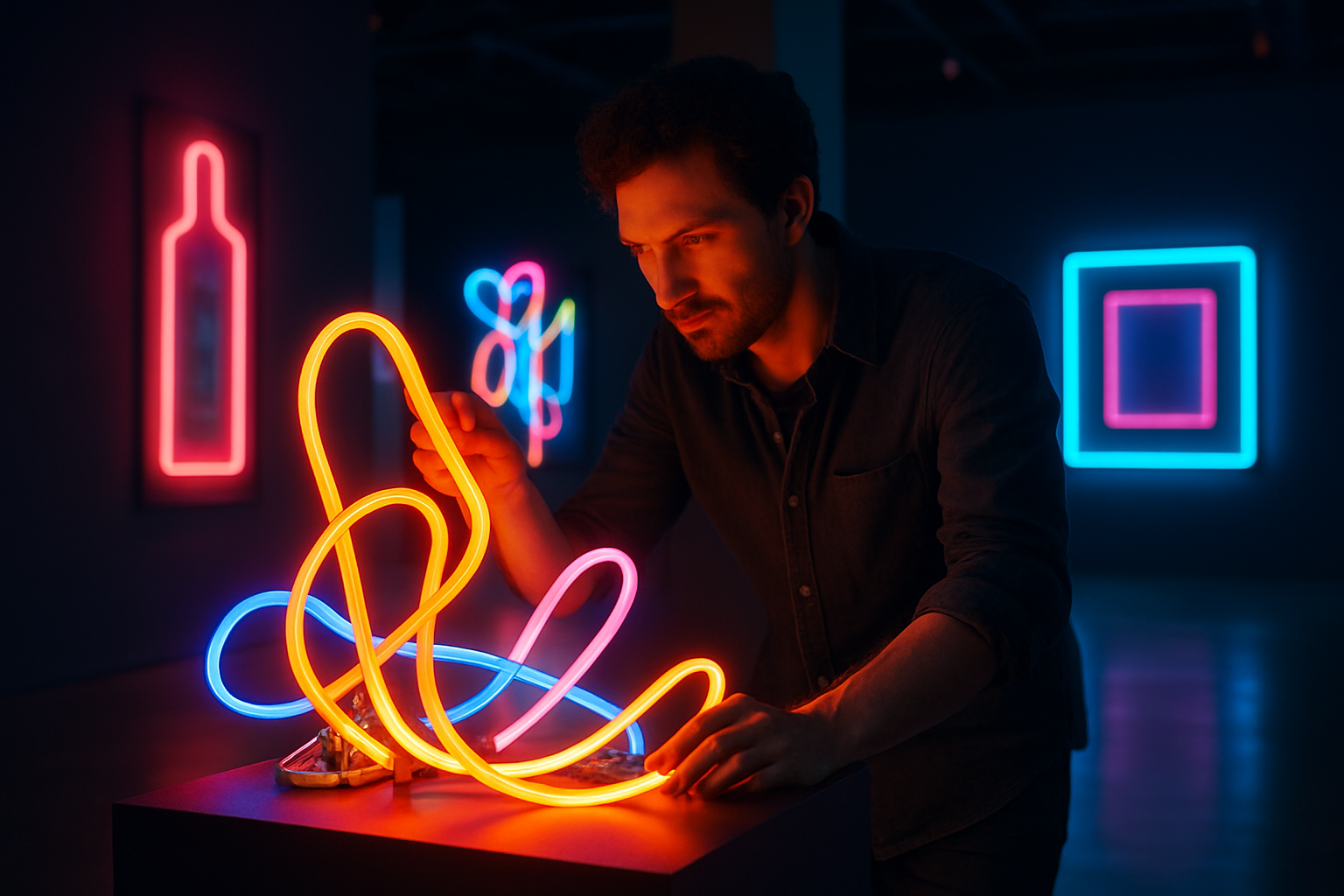Neon Renaissance: Illuminating Contemporary Art
In the ever-evolving landscape of contemporary art, a dazzling trend has emerged, captivating audiences and critics alike. Neon art, once relegated to the realm of commercial signage, has undergone a remarkable transformation, becoming a powerful medium for artistic expression. This resurgence of neon in fine art circles has sparked a vibrant dialogue about the intersection of technology, nostalgia, and visual storytelling. As galleries and museums increasingly showcase neon installations, we delve into the electrifying world of this luminous art form, exploring its history, current innovations, and the artists leading this incandescent revolution.

Pioneers of Light: Early Neon Artists
During the 1960s and 1970s, artists like Dan Flavin and Bruce Nauman began experimenting with neon, pushing the boundaries of what was possible with this luminous material. Flavin’s minimalist light installations and Nauman’s word-based neon pieces challenged traditional notions of sculpture and conceptual art. These pioneers paved the way for future generations of artists to explore neon’s unique properties and expressive possibilities.
The Technical Artistry of Neon
Creating neon art requires a blend of scientific knowledge and artistic vision. The process involves heating glass tubes, bending them into desired shapes, and filling them with noble gases. When electrified, these gases emit their characteristic glow. Neon produces a bright red-orange light, while other gases create different colors. Argon, for example, produces a soft blue hue when combined with mercury vapor. This technical complexity adds an extra layer of skill to the artistry, as neon artists must master both the conceptual and practical aspects of their craft.
Contemporary Luminaries: Leading Neon Artists Today
Today’s neon artists are pushing the medium to new heights, creating works that range from intimate sculptures to immersive installations. Tracey Emin, known for her confessional art, uses neon to render her handwriting in glowing form, creating deeply personal and emotionally charged pieces. Meanwhile, Iván Navarro incorporates neon into his politically charged sculptures, often addressing themes of power and oppression through illusory light effects.
Beyond the Gallery: Neon in Public Spaces
Neon art has also found its way into public spaces, transforming urban environments into nocturnal galleries. Cities around the world have commissioned large-scale neon installations, turning buildings and bridges into canvases for light. These public works not only beautify cityscapes but also spark conversations about the role of art in everyday life. The Las Vegas Neon Museum, dedicated to preserving iconic neon signs, stands as a testament to the medium’s cultural significance and its ability to capture the zeitgeist of different eras.
The Future Glows Bright: Innovations in Neon Art
As technology advances, so too does the potential for neon art. Artists are now combining neon with other media, such as video and interactive elements, to create multi-sensory experiences. The development of LED-based neon-like tubing has also opened up new possibilities, allowing for more flexible and energy-efficient designs. These innovations are expanding the vocabulary of neon art, ensuring its continued relevance in the contemporary art world.
In conclusion, the neon renaissance represents a fascinating convergence of art, science, and nostalgia. As artists continue to explore the medium’s potential, neon art stands poised to illuminate the future of contemporary art, casting its warm glow on galleries, public spaces, and the imaginations of viewers worldwide. This luminous movement serves as a brilliant reminder of art’s power to transform, inspire, and shed light on the human experience in ever-evolving ways.





